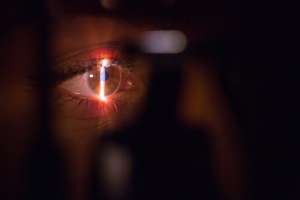Under-eye bags are a common concern for many individuals, often giving a tired or aged appearance. While factors like genetics, aging, and lifestyle play significant roles in the development of under-eye bags, many seek non-surgical options to address this issue. One effective solution is using fillers for under eye bags, a minimally invasive treatment that restores volume and smooths the area beneath the eyes.
Understanding Under-Eye Bags: Under-eye bags occur when the fat pads under the eyes shift or become more prominent, often due to aging. The skin around the eyes is delicate and loses collagen over time, leading to sagging and hollowing. Other contributing factors include lack of sleep, allergies, and poor hydration. Many people turn to fillers to resolve these concerns as a safe, quick, and effective solution.
How Fillers Work for Under-Eye Bags: Fillers for under eye bags typically involve the use of hyaluronic acid-based products like Restylane or Juvederm. These fillers are injected into the hollow areas beneath the eyes, restoring volume and reducing the appearance of under-eye bags. Hyaluronic acid is a natural substance found in the body that helps retain moisture, providing a plumping effect. The goal is to create a smooth transition between the lower eyelid and the cheek, giving a more youthful and rested look.
The Procedure: The process of injecting fillers for under eye bags is relatively simple and quick, usually taking about 30 minutes to complete. After a consultation with a skilled practitioner, numbing cream is applied to the area to minimize discomfort. The injector then uses a fine needle or cannula to place the filler in precise locations beneath the skin. While some patients may experience mild bruising or swelling, these side effects typically subside within a few days.
Benefits of Fillers for Under Eye Bags: One of the primary advantages of fillers for under eye bags is the immediate and long-lasting results they provide. Patients often notice a significant improvement in their appearance right after the treatment, with results that can last from 6 months to over a year, depending on the filler used. Other benefits include minimal downtime, a non-surgical approach, and a subtle, natural outcome that doesn't drastically alter one's face.
Ideal Candidates for Under-Eye Fillers: Not everyone is an ideal candidate for this procedure. Fillers for under eye bags work best for individuals with mild to moderate puffiness or hollowness. People with more severe under-eye bags or sagging skin might require surgical options like lower eyelid surgery. A consultation with an experienced practitioner is essential to determine the most appropriate treatment plan.
What to Expect After Treatment: Following treatment, patients may experience temporary side effects such as redness, swelling, or slight bruising at the injection site. These usually resolve within a few days. To maintain the results of fillers for under eye bags, patients should avoid strenuous activities for 24 hours post-procedure. Results are typically seen within a week as the filler settles, and follow-up treatments can be scheduled as needed to maintain the youthful appearance.
Conclusion: Fillers for under eye bags are a highly effective, non-surgical solution for those seeking to reduce the appearance of puffiness or hollowness under the eyes. With minimal downtime, immediate results, and long-lasting effects, this treatment offers a safe and accessible way to achieve a more youthful and rested look. Consulting with a skilled practitioner is key to ensuring the best results and addressing individual needs.





